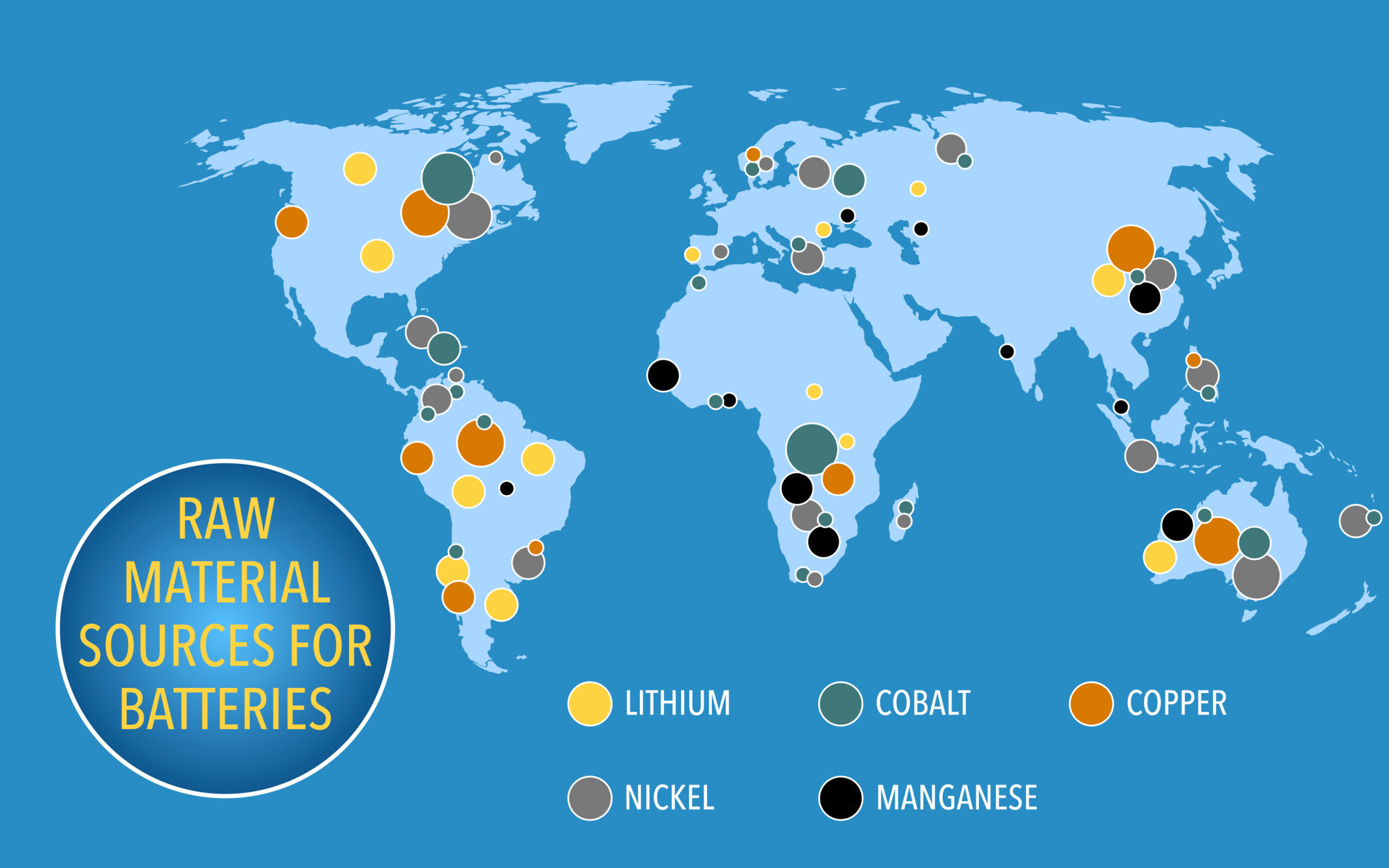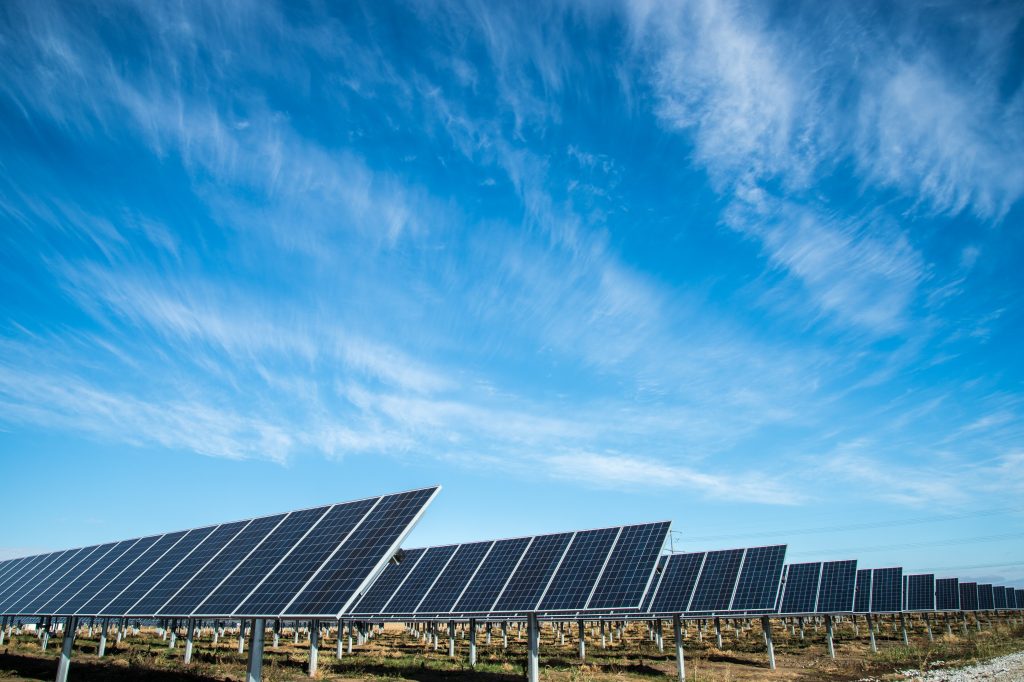
Solar photovoltaic (PV) energy is 2020’s fastest growing renewable energy source. According to the National Renewable Energy Laboratory, the United States installed a record-high 7.2 gigawatts (GW) of direct current PV in the first half (H1) of 2020, up 48% from H1 in 2019. Gains in the solar industry are making PV power sources increasingly competitive with fossil fuels.
The solar utility sector saw more growth than the commercial and residentials sectors in 2020. Solar in the utility sector saw 89% year-over-year growth in H1 2020. Commercial sector PV installations decreased 14% and residential PV installations were relatively flat.
Almost 60% of US PV capacity installments this year took place in California, Texas, and Florida. Environment America’s Shining Cities 2020 report found Honolulu has the highest solar PV installed per capita, with 840.88 watts per person in 2019. Los Angeles leads the nation in total installed solar PV capacity, with 483.8 MW by the end of 2019.
Solar energy provided about 2% of the total electricity produced in the United States in 2019. Last year, the solar industry employed around 250,000 people and generated $18.7 billion of investment in the U.S. economy. The country has over 85 GW of installed solar capacity, enough to power 16 million homes.
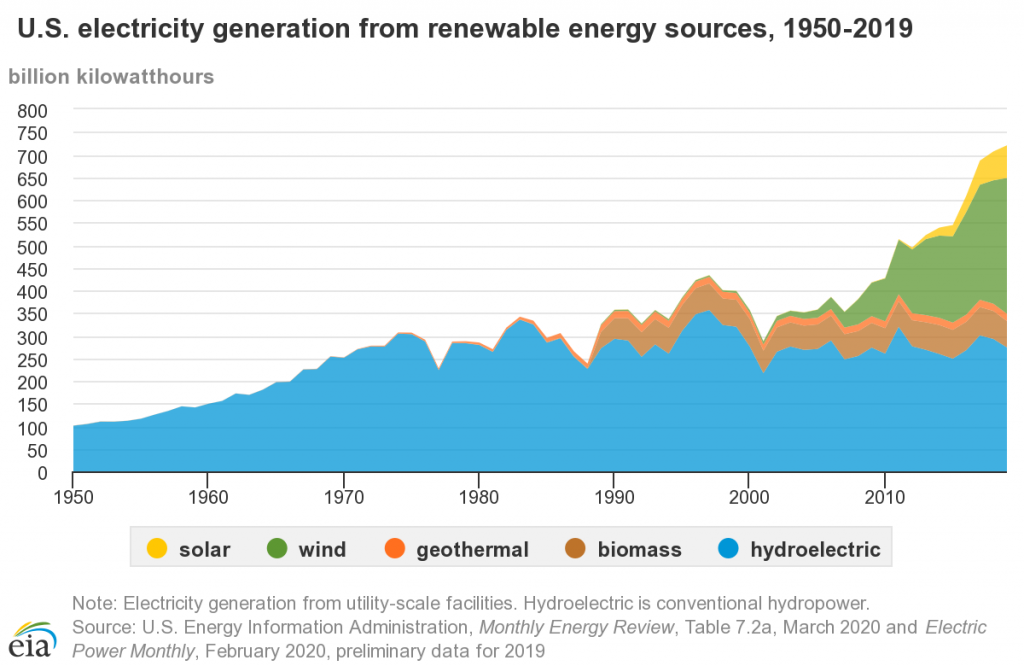
Solar power is now one of the cheapest sources of electricity. In the past decade, the solar industry has seen a 90% drop in the cost of solar modules. From 2010 to 2019, electricity costs from large-scale solar PV installations dropped from about $0.38 per kilowatt-hour to $0.07 per kilowatt-hour.
Despite higher upfront installation costs, solar power is less expensive than carbon-based power in the long-run. The cost of a residential solar system depends on its geographic location, size, and brand. Installed residential solar systems in the U.S. have an average price of $2.57 per watt and total costs ranging from $10,250 to $12,528 after the solar Investment Tax Credit (ITC).
The ITC is a 26% tax credit for solar systems on residential and commercial properties. Since the implementation of the ITC in 2006, the U.S. solar industry grew by more than 10,000%. Furthermore, the industry saw an average annual growth of 50% over the last decade alone.
U.S. tariff policy also plays an important role in the success of the solar industry. According to the Congressional Research Service, 98% of solar cell and module production occurs outside of the United States. The cost of imported panels has decreased significantly, enabling record-high levels of solar imports despite continued tariffs: 14.2 GW of PV modules and 1.3 GW of PV cells in H1 2020.
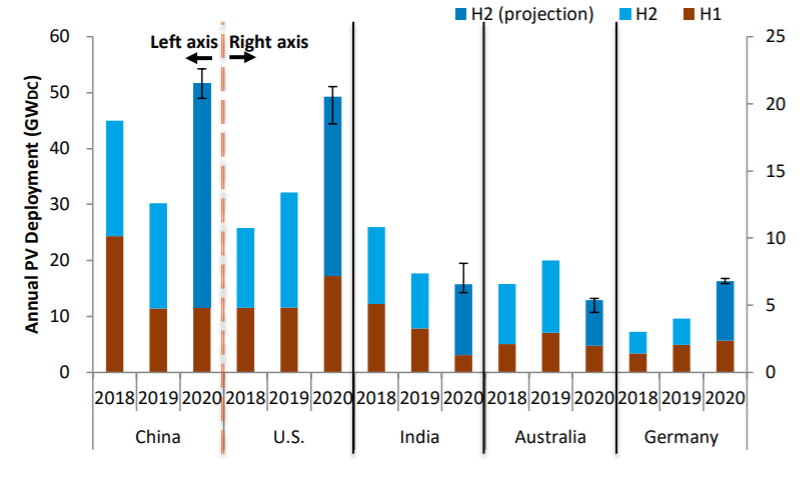
Gains for solar in the early 2020 stock market diminished with the COVID-19 induced economic downturn in March. At the time, the solar sector experienced stronger than expected demand and good financial performance from companies. Consequently, solar stocks outperformed the rest of the market.
According to the MAC Global Solar Energy Stock Index, solar stocks bounced back since spring 2020 due to affordability, the viability of solar-plus-storage, and Joe Biden’s apparent presidential victory and clean energy agenda. Bloomberg New Energy Finance (BNEF) forecasted U.S. solar installs in 2020 will grow by +21% to 13.4 GW.
The Invesco Solar ETF (TAN) represents solar stock performance very well. In September 2020, TAN outperformed the broader market with a total return of 77.3% over the past year. In comparison, the Russell 1000 Index saw a total return of 13.8%. Expectations about Joe Biden’s election victory and increased investment in renewable energy drove TAN up over 120% from the beginning of 2020 to date.
Sunrun (RUN) and Tesla (TSLA) are the largest solar installation companies in the United States. Sunrun spiked over 300% this year and acquired Vivint Solar for $3.2 billion in July — a deal that merged the nation’s two largest rooftop solar companies.
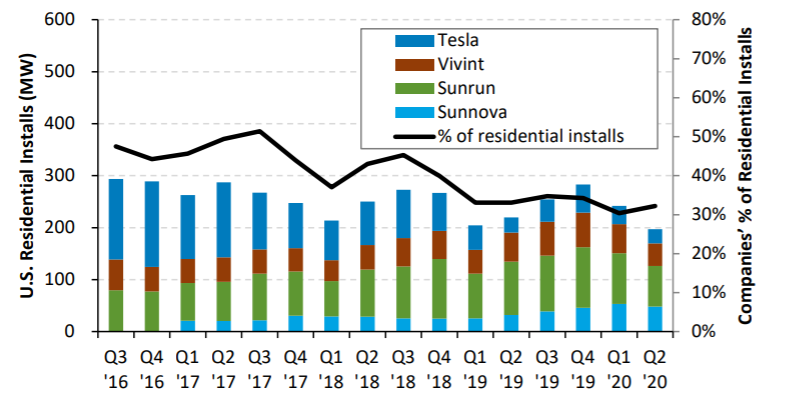
In June 2020, Tesla announced they will deliver the lowest price for solar of any national provider with a price-match guarantee. The company currently charges $1.49 per watt of solar on existing roofs and installed over 3.6 GW of clean solar energy across 400,000 roofs—the equivalent of 10 million traditional solar panels.
Tesla CEO Elon Musk expects Tesla Energy to eventually grow to the size of Tesla Automotive. Musk believes energy storage will play a key role in that process. “In order to achieve a sustainable energy future, we have to have sustainable energy generation… so you need to have a lot of batteries to store [renewable] energy because the wind doesn’t always blow and the sun doesn’t always shine.”
Tesla’s lithium-ion battery energy storage business has a new publicly traded competitor, Eos Energy Enterprises. Eos developed the Znyth® aqueous zinc battery to “overcome the limitations of conventional lithium-ion technology.” Eos promotes their Znyth® battery as a more sustainable, scalable, efficient, and safer energy storage alternative to lithium-ion batteries.
Solar Power’s Bright Future
Solar power converts sunlight into electricity. It is a clean energy alternative to fossil fuels, with a smaller environmental impact and carbon footprint. Solar panels are most effective in direct sunlight. However, they can still generate electricity in cloudy weather or cold temperatures.
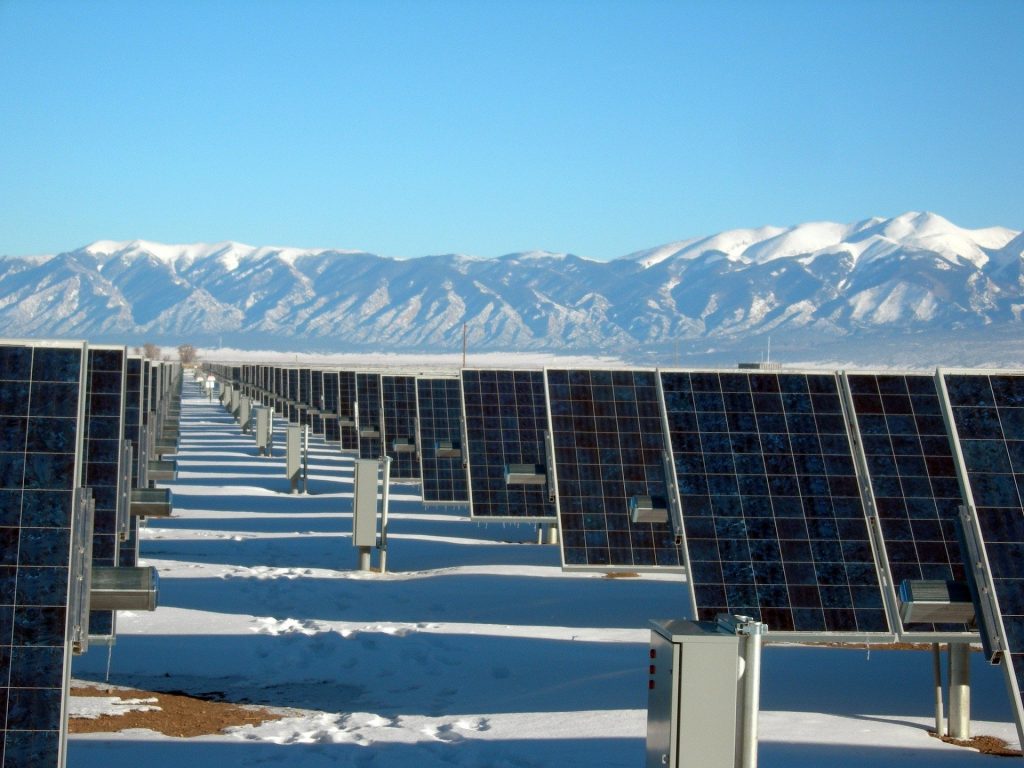
The sun is a promising energy source that can produce billions of years of electricity. On the contrary, fossil fuels are finite resources that could be used up within the next few centuries. The U.S. Energy Information Administration estimates the United States has enough dry natural gas to last about 92 years and enough recoverable coal reserves to last about 357 years.
Greater investment in solar power can lead to greater national energy independence and less dependence on foreign fossil fuels. There are plenty of regions in the US, especially the Southwest, with sufficiently high annual percentages of sunlight.
Individual homeowners can attain a degree of energy self-reliance by buying into solar for its increasing efficiency and decreasing costs. Many solar array warranties cover about 25-30 years and arrays often last longer due to their durability. The median average photovoltaic degradation rate is a 0.5% loss of energy efficiency per year, so the solar panels on a roof could still be operating at 88% of their original capacity after a 25-year warranty.
According to EnergySage, the typical solar panel payback period in the U.S. to break even on a solar energy investment is 8 years. After 20 years, a solar panel investment on your home or business can accrue savings ranging from $10,000 to $30,000.
Solar’s Dark Side
Solar power is an intermittent energy source because the sun does not shine at all hours of the day. The intermittent nature of solar power makes it a non-dispatchable energy source. This means the electricity produced cannot be used at any given time to meet electricity demands.
Electricity storage solutions address the intermittent nature of renewable energy like solar, wind, and wave power. MAC Solar Index believes solar-plus-storage will become even cheaper in coming years. Lithium-battery prices already dropped by 85% from 2010 to 2019. MAC predicts they will drop by another 52% by 2030.
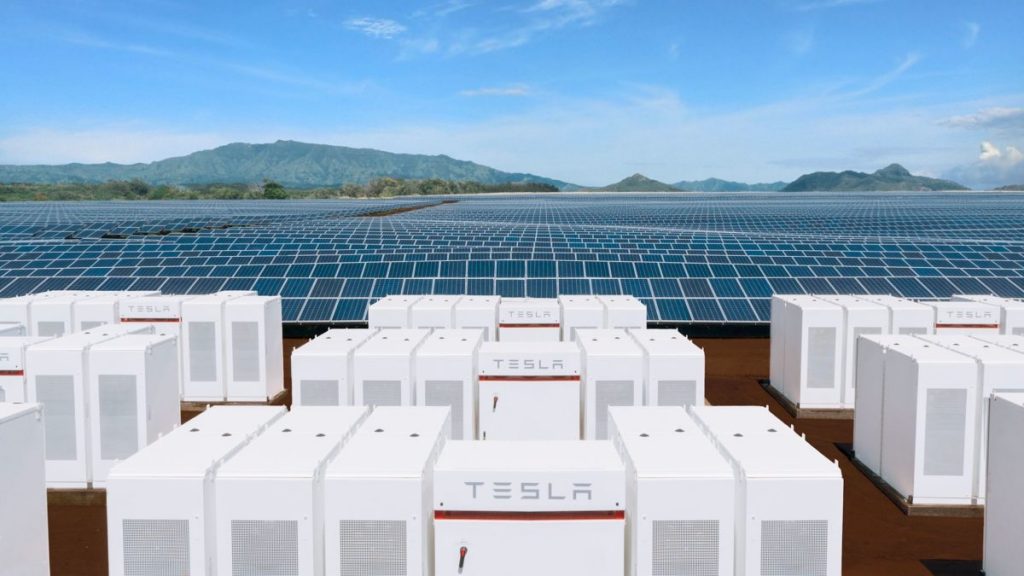
Photovoltaic cells contain rare earth metals like cadmium, gallium, and indium. These metals are limited resources — their extraction for solar panels and other electronics must be carefully monitored in order to prevent total depletion.
Solar modules are hard to recycle. Their components — including plexiglass, metal framing, wires, glass sheets, and silicon solar cells — must be separated in order to be recycled. This is a tedious process that requires advanced machinery. Complexity and cost increase the risk that a landfill becomes a solar panel’s final resting place.
Improper disposal and breakage of solar panels can cause toxic chemicals like lead and cadmium to leach into the soil. The International Renewable Energy Agency (IRENA) in 2016 estimated there was about 250,000 metric tonnes of solar panel waste in the world at the end of that year.
IRENA projected solar waste could reach 78 million metric tonnes by 2050. Many experts are pushing for mandatory recycling of solar panels to curb future solar panel pollution. The cost of the recycling process currently exceeds the value of the materials that would be recovered. Policies that ban or incentivize solar recycling will be critical to the long term sustainability of solar operations.
Soak Up the Benefits of Solar Power and Invest in Solar Energy
If you’re looking to invest in solar energy, TAN is the best pure solar ETF. To invest in solar and other clean energy companies, the ALPS Clean Energy ETF (ACES) suggested in our previous blog continues to be our favorite diversified renewable energy play.
For those wanting to invest closer to home, you can install solar panels on your own roof. Residential solar is a sustainable energy option that can increase the value of your home. In addition, solar panels pay for themselves after approximately 8 years of savings. Calculate how much you can save with solar here.
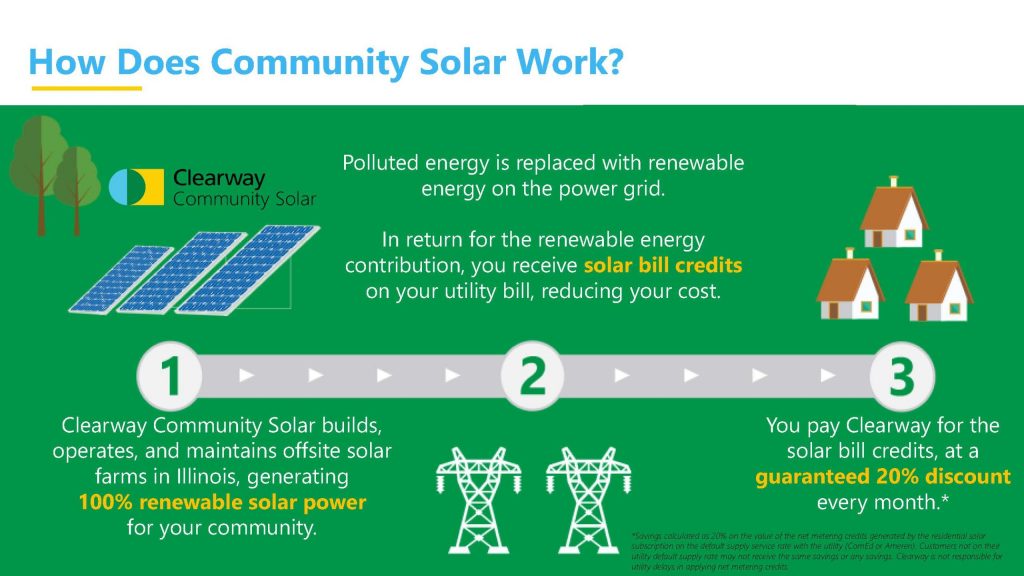
If you don’t want to install solar panels on your home, consider subscribing to a community solar project. Subscribers receive cost-reducing community solar credits on their electric bills for the renewable power produced.
Trajectory Energy Partners and Clearway Energy is one such community solar project that offers Illinois residents with a ComEd or Ameren electric bill a 20-year community solar contract with no upfront investments. The program helps subscribers support local renewable power operations and save up to 50% on annual electricity supply costs.
The future of solar energy is bright. Solar power is an indispensable element of the transition to a net-zero carbon emissions future. Solar energy’s marginal cost of production is zero — we simply need to capture its rays. By letting solar PV soak up the sun, the more sparkling our environment will be for future generations.
To talk more about investing in solar, or other investment opportunities, contact us today. Together, we can find the right investments for you, the ones that align with your values and help you to reach your financial and life goals.






